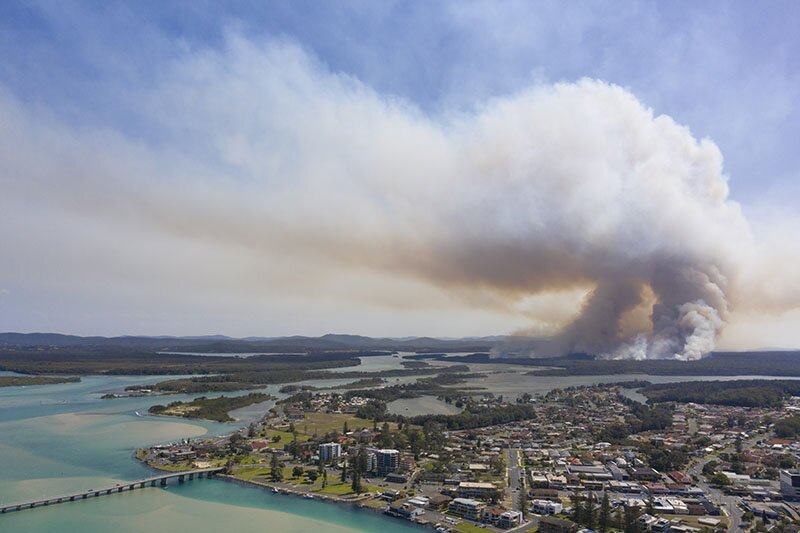Unfortunately, the world is not short of natural disasters, and often they’re in significant tourist areas. Immedielty after the fact, this often puts a lot of pressure on local economies and small business that rely on tourist dollars. But how soon is too soon to visit a disaster area?
Researchers from both the University of South Australia and UTS Business School say it’s often wise to wait, just a little bit.
Talking speffically about the bushfires that have burned more than two-thirds of Kangaroo Island in South Australia, UniSA’s Dr Freya Higgins-Desbiolles says the situation is far more complex than just boosting tourist numbers. “The bushfire crisis on Kangaroo Island is heart-breaking,” Professor Higgins-Desbiolles says, “and for a holiday destination that relies on tourism, the summer-holiday fires could not have come at a worse time. Kangaroo Island is a tourism-dependent economy, and while tourism operators and authorities are calling for people to keep visiting Kangaroo Island, the fires are not yet out, CFS volunteers and defence personal are still being deployed, and infrastructure like the water treatment facilities are damaged.
Additionally, critical services like the Kangaroo Island ferry are needed to transport emergency service personnel and equipment. I just think it’s too soon at this moment.
Dr Higgins-Desbiolles says while it’s strategically important to plan the recovery of Kangaroo Island’s tourism businesses and primary producers, immediate tourist visits may not be the answer. While it is still be possible to visit Kangaroo Island at this time, it may not be the most viable or ethical decision under the current circumstances.”.
“For those of us who love Kangaroo Island and want to see its economy recover and thrive, the advice for the short term is provide donations if you can, buy Kangaroo Island produce and products, and when the time is right, book your holidays there and plan to consciously direct your spending to support the local economy.
Citing the research done in the wake of Nepal’s 2015 earthquake that measured 8.1 on the Richter scale and was responsible for over 9000 deaths, Dr David Beirman, from the University of Technology Sydney says, “When disaster hits a tourist destination – whether fire, flood, cyclone or earthquake – tourists naturally stay away, leaving communities to deal with loss of income on top of costs of repair and recovery. On the other hand, people who feel a natural curiosity, as well as a natural desire to help, are keen for experiences where they can interact with locals and make a difference.”
Dr Beirman was involved in a study that examined the impact of volunteer tourism programs in Nepal in the wake of the April 2015 earthquake, to provide insight into their potential to help communities recover from natural disasters, and rebuild tourism industries. They found that when it was done in an ethical manner that considered local conditions and the community, it could aid recovery and resilience.
Another author of the study, Dr Simone Faulkner said, “The success of volunteer tourism also depends on the willingness of volunteer tourists to engage in a travel experience that involves engaging in work that more mainstream tourists may view as a hardship. In times of national crisis, the priority of a government has to be restoring the welfare of its people. However, the process by which that happens is multifaceted. In destinations that rely on tourism as a primary source of foreign investment, it can make sense to build tourism into the recovery process.”So, if you are considering travelling to fire affected areas, consider how you can engage with local community and volunteer groups to give more than just your tourist dollar, but don’t rush down there just for a look.
- Shows Cancelled amid COVID-19 Fears - 14 March 2020
- Windsor Caravans Now Does Motorhomes - 11 February 2020
- First Look – Frontline HiAce 6th Generation - 10 February 2020
- ACC Heading to Charters Towers - 5 February 2020
- New HiAce Frontline Camper Unveiled - 4 February 2020
- Should You Travel To Bushfire Affected Communities? - 12 January 2020
- Can Your Caravan Help After The Bushfires - 11 January 2020
- Why We Use Camplify And You Should Too - 29 October 2019
- Trakka Akuna Campervan – First Look - 24 October 2019
- Car and Caravan Weight Calculator - 11 October 2019





1 Comment
Barry O'Connor
Australia has had a number of areas all over Australia affected by bushfires and all businesses/ towns are looking for is for people to come and stay a few days.